Breeding success: how tattoos and aviaries are helping save the saker falcon
In Bulgaria and southern Siberia, conservationists are finding innovative ways to halt decades of decline for the endangered species
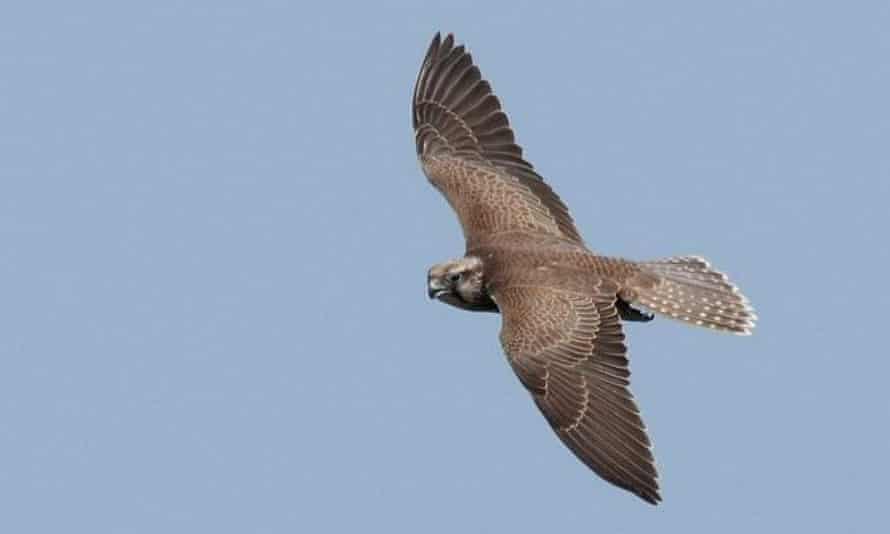
Large and powerful with a wing span of more than a metre, the saker falcon is one of the fastest birds in the world. They soar high in the air before diving at up to 200mph to catch small mammals and birds.
These predators used to be plentiful, from the grasslands and forest steppes of central and eastern Europe to the semi-desert and mountain plateau regions of east Asia, but over the past few decades human activities have devastated numbers. The global population declined by nearly half between 1993 and 2012 and saker falcons are now listed as endangered by the International Union for Conservation of Nature, with only about 10,500 breeding pairs left in the wild.
As the threats against these birds increase, so too have the efforts to save them – with some success.
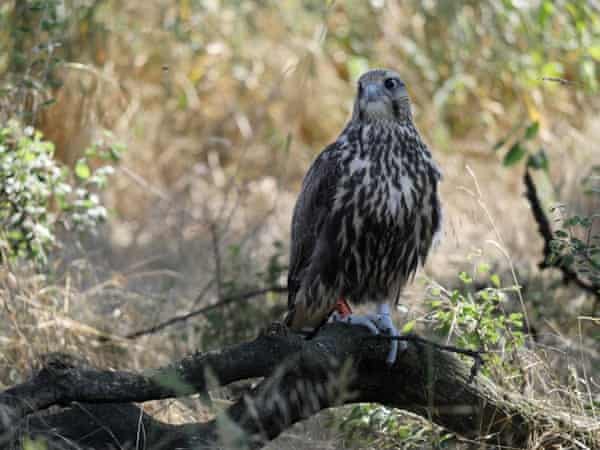
In Bulgaria, a five-year conservation scheme run by the Green Balkans Wildlife Rehabilitation and Breeding Centre published results in May showing that a pair of captive-bred birds released into the wild had been breeding.
Saker falcons were considered extinct as a breeding species in Bulgaria for more than 20 years. Multiple factors contributed to their decline, including habitat loss as Bulgarian agriculture became more intensive from the 1950s, power-line electrocution, pesticides in the food chain, and poaching to satisfy demand for falconry, especially in the Middle East.
“By the end of the century we effectively didn’t have any pairs breeding in the country,” says Yana Andonova, of Green Balkans.
Over the past decade, Green Balkans, based in Stara Zagora, central Bulgaria, has been running a breeding programme with the aim of restoring saker falcon populations. In 2015, it launched its five-year reintroduction project, importing birds from European countries including Hungary and Poland to breed in aviaries.
The organisation installed “hacks” high in oak trees to house young falcons once they reached 30 days old. These specially adapted aviaries, made of steel mesh and fitted with cameras, allow young birds to flap their wings and get accustomed to their environment safe from predators.
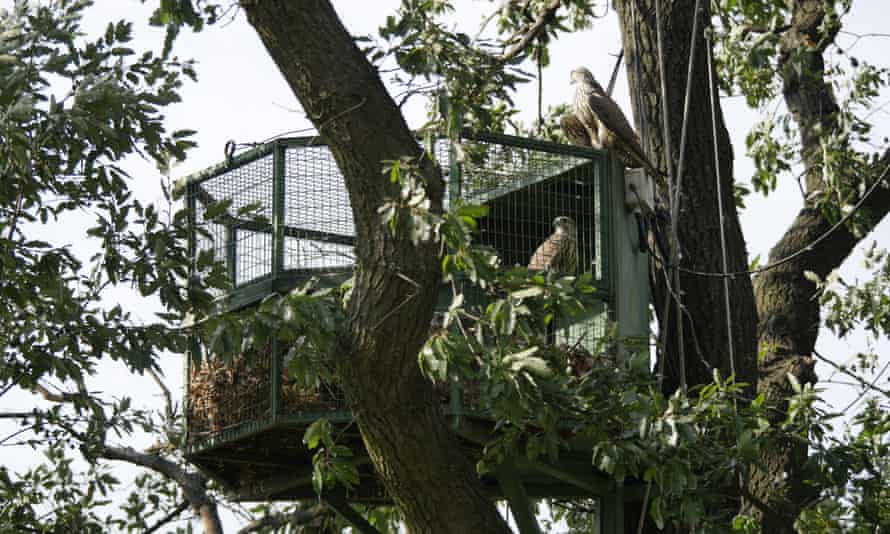
The birds were fed twice a day using a pulley system to avoid human contact. Gradually, the team raised the top of the hack and started putting food on a table outside to encourage the birds to explore. Food was provided for two or three months. “After a while they started hunting by themselves,” says Andonova.
Between 2015 and 2020, the Green Balkans’ programme released 80 saker falcons into the wild. But tracking them to monitor survival rates and breeding has been difficult. They were not fitted with satellite trackers as previous experiments had shown these to be detrimental to the birds.
A breakthrough came in 2018, when a group from the Bulgarian Society for the Protection of Birds (BSPB) monitoring imperial eagles in the south-east of the country found an active saker falcon nest. The birds had identification tags from the Green Balkans’ breeding programme. The discovery was incredibly exciting, says Andonova. “It showed that all the efforts had paid off.”
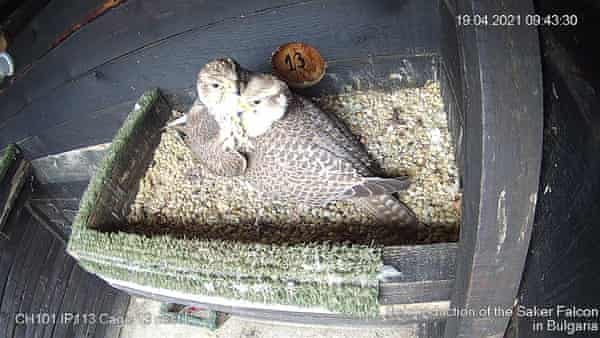
This pair bred for two years and then in 2020 Andonova’s team found that the female of the pair had been replaced by another female, also from the breeding programme. “This was also really good news because it shows that even if something happens to one bird, there are other saker falcons in the country so they can easily form a new pair,” she says. The new pair had chicks last year.
Green Balkans is continuing the breeding project for another five years, and aims to release 100 birds and have six breeding pairs in the wild by 2024, says Andonova, “which will be the start of a self-sustaining population in Bulgaria”.
Saker falcons are a bellwether for the health of broader ecosystems, says Campbell Murn, head of conservation at the Hawk Conservancy Trust. “If you’ve got a healthy population of predators, generally the ecosystem that supports them is also going to be healthy.”
That is why reintroduction programmes alone, positive as they are, are unlikely to solve the population decline, he says. “We need to get a good handle on the threats that caused that species to decline or go extinct in the first place.”

In Bulgaria, they have been doing just that. The BSPB has bought 640 hectares (1,600 acres) of land to restore grassland habitats for the birds. It has also insulated more than 4,600 power lines across Bulgaria in an effort to reduce electrocution deaths. “One of our main activities is focused on habitat management and restoration,” says Svetoslav Spasov, a BSPB project manager.
BSPB is also working with police and border agencies to try to stamp out poaching. Tackling the illegal wildlife trade is vital. “It’s probably one of the biggest threats that saker falcons face,” says Murn. The resurgence of falconry in recent decades has led to increased demand for wild birds, which can fetch tens of thousands of dollars on illicit markets.
More than 3,000 miles from Bulgaria, in the Altai mountains in southern Siberia, researchers at the Altai Falcon Nursery are trying out a novel method to deter poachers.
Saker falcons used to be widespread in this region but there are now only two to three pairs nesting in the wild, according to Sergey Snigirev, a professor at Altai State University. The university has run breeding and reintroduction programmes for saker falcons for decades, but in May they tried something new. Each of the 10 birds they released has the letters SOS tattooed on their cere, the wax-like skin above their beaks, and the number 22 inked on their leg. The tattooing takes just five to 10 minutes, says Snigirev, and is painless for the birds.
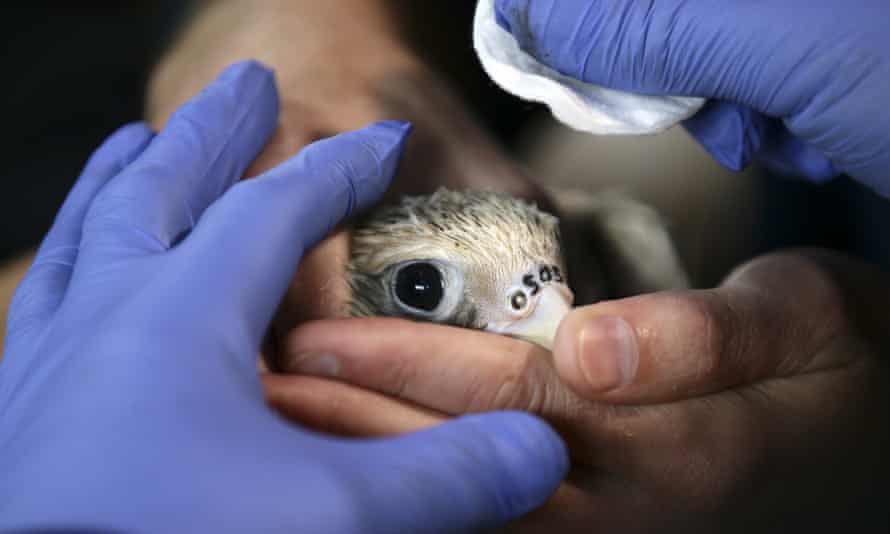
The tattoos make the falcons worthless to poaching gangs who prize unmarked wild birds. “This is the first time the technique has been used in Russia to exclude reintroduced birds from illegal commercial trafficking,” says Snigirev. If the plan works, he adds, it will be recommended for wider use.
For now, the global fate of the saker falcon still remains in the balance. “It’s an iconic species,” says Stoycho Stoychev, conservation director at the BSPB. Saker falcons are not only a vital part of the ecosystem but are woven into the national culture of many countries, including Bulgaria, where they have even been immortalised in poetry.
“We are losing one of our natural assets,” he says. “The intrinsic value of losing such a bird, that is so gorgeous, would be a great loss.”
Find more age of extinction coverage here, and follow biodiversity reporters Phoebe Weston and Patrick Greenfield on Twitter for all the latest news and features
